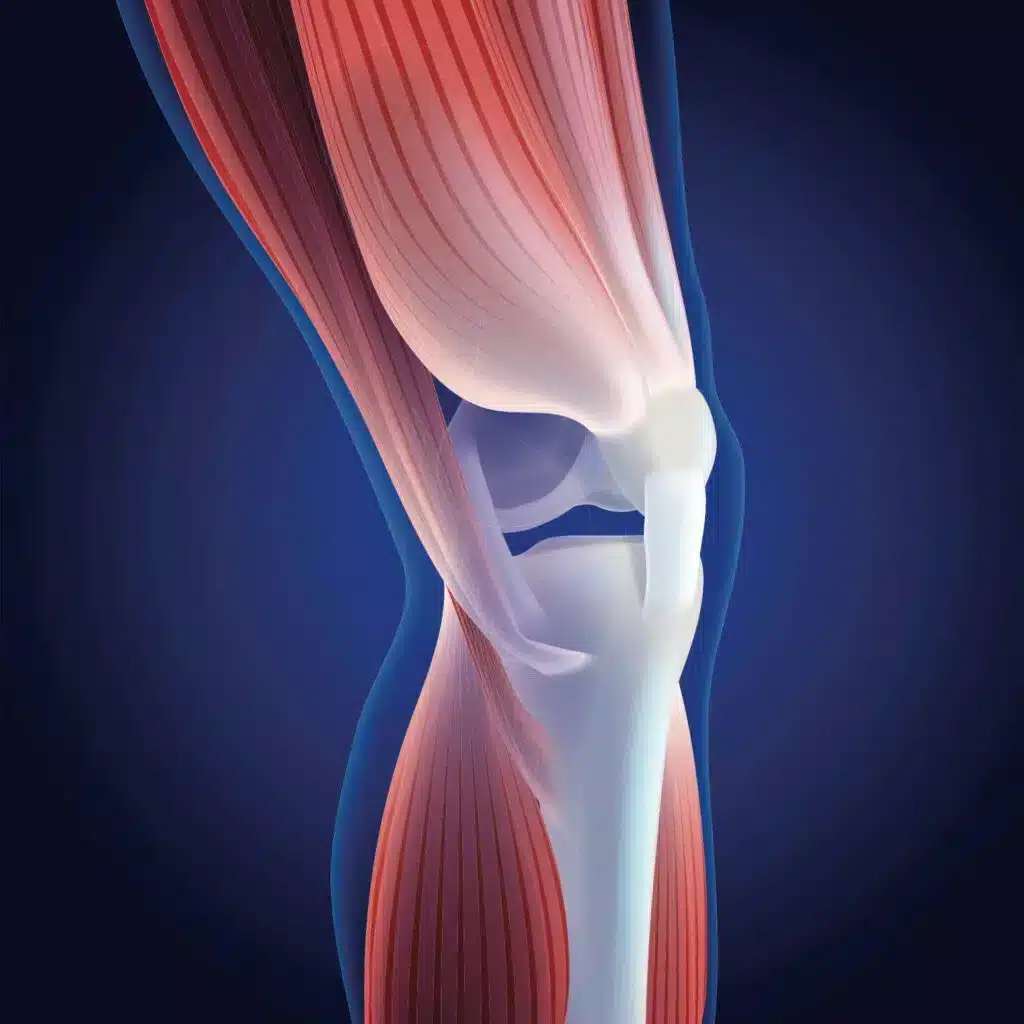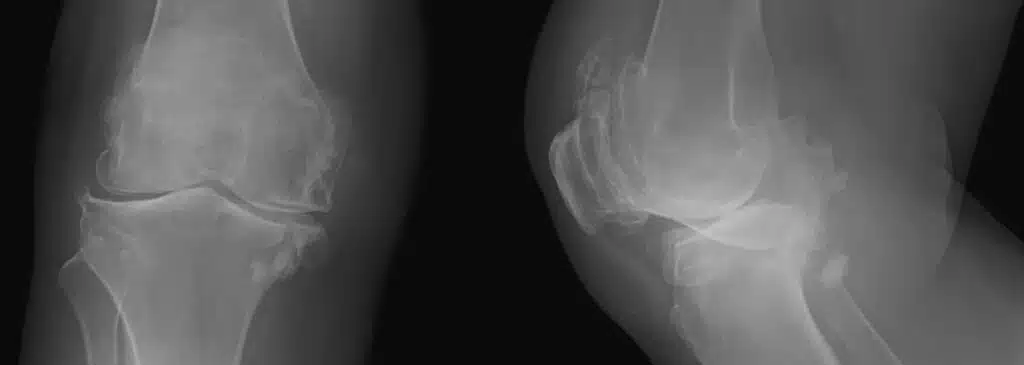There’s no cure for knee arthritis.
You’ll have to accept that this is the way it is from now on.
Focus on managing your symptoms.
These are phrases arthritis patients commonly hear while sitting on the examination table. For decades, doctors have thought that people suffering from osteoarthritis had no choice but to live with the pain. Osteoarthritis is considered to be an incurable condition, with treatment options limited to delaying the progression of the disease for as long as possible. 1)2)3)
However, the results of a 2013 study by Professor Floris Lafeber at the University Medical Centre Utrecht, Netherlands, are changing how medical professionals think about osteoarthritis.
Knee Joint Distraction (KJD)
Professor Lafeber and his team researched a treatment for knee osteoarthritis called knee joint distraction (KJD).
Distraction is an invasive surgical procedure that temporarily separates the ends of two bones that form a joint. Space is created between the ends of the bones by fixing a frame outside of the affected area. Each bone is drilled in several places, and metal pins are inserted into the holes. The pins protrude from the skin to attach to a metal frame. Joint distraction resets the bones so that they can grow back correctly.
Joint distraction is not new. For over 100 years, bone distraction has been used to lengthen bones. 4) The surgery has proven very effective, especially when healing complicated bone fractures.
Why Knee Joint Distraction?
Professor Lafeber and his team wanted to determine if increasing the distance between the knee bones could reduce pain and improve mobility.5) What ended up happening was that the team made a discovery that could prove to be groundbreaking for the treatment of osteoarthritis.
Previously, the team had conducted clinical studies on bone distraction for ankle osteoarthritis.6)7) The positive results of these studies8)9) led the team to hypothesise that bone distraction may benefit knee osteoarthritis.
The Study
For the 2013 study, 20 participants were selected. All were physically active people between the ages of 32 and 57 suffering from stage 4 (a.k.a end stage) knee osteoarthritis. (Stage 4 is the most severe stage of osteoarthritis.) All participants were experiencing loss of function (limited mobility) and persistent pain. Conservative knee osteoarthritis treatments had been exhausted — the next step would have been knee replacement surgery. (Considering the age of the participants and the 15 to 20-year lifespan of a knee replacement, a second replacement would probably be necessary.)
Each participant’s distraction was applied to their upper and lower leg bones, increasing the space in the participants’ knees. The goal of the procedure was to create space in the knee that would remain even after the distraction had been removed, delaying the need for knee replacement surgery.
Potential Complications During Distraction
There are potential complications that can occur during distraction.
Exposing the distraction device to external forces, like falling and landing on the device or catching it on an item of clothing, could impact the bones.
Patients may develop ‘pin-track infection’.10) This is an infection in the areas where the pins protrude. A common side effect of pin-track infection is inflammation in the area.
In a worst-case scenario, germs could penetrate the bones.
Since the distraction device has to be worn for many weeks, a complication will likely occur.
Results of the Study
The procedure was successful for all participants.
Most developed a pin-track infection, which was treated with antibiotics.
Immediately after removing the distraction device, the participants found that their knee mobility was restricted. Reduced movement was expected since immobilised joints stiffen. Within a few weeks, the stiffness was gone entirely.
After only three months, participants’ pain had subsided considerably, with a significant increase in knee mobility. Participants’ knees continued to heal steadily in the six months that followed. A one-year follow-up showed that the range of motion of participants’ knees had continued to increase, and their pain had decreased.11)

Graphic of an external knee distraction (© Liebscher & Bracht
The Unexpected Discovery That’s Breaking Ground
After the distraction device was removed, the research team documented the participants’ progress with magnetic resonance imaging (MRI) and X-rays.
The team made an unexpected discovery: cartilage had regenerated.
The deteriorated cartilage was thicker, and areas of exposed bone were covered with cartilage.
The MRIs showed that the newly formed cartilage had the same properties as healthy cartilage12); it could withstand the stress and force of bearing weight.
The regenerated cartilage was not a temporary phenomenon. A long-term observation showed that the cartilage was still thicker seven years after the distraction.13)

Healthy knee joint with normal bone distance (© peakanucha | shutterstock.com)
Knee Distraction: A Successful Treatment for End-Stage Osteoarthritis
Professor Lafeber’s 2013 study and several follow-up studies prove that knee distraction is a viable treatment for knee osteoarthritis and can delay the need for knee replacement surgery by at least two years.
Despite the procedure and associated complications, participants were satisfied with the results of the distraction.
Considering the results of Professor Lafeber’s study and the participants’ feedback, knee distraction could emerge as a treatment option for knee osteoarthritis.
Knee distraction is a desirable option for younger people with knee osteoarthritis, considering the average lifespan of knee replacements. (40% of patients with partial knee replacements and 44% with total knee replacements are younger than 65.)
Paving the Way for the Future
Professor Lafeber and his team emphasise that their discovery of cartilage regeneration at the most advanced stage of osteoarthritis opens up new research opportunities and treatments, which could lead to a cure.
Since this study was conducted, The University Medical Centre in Utrecht, Netherlands, has regularly used knee distraction to treat osteoarthritis successfully.
You don’t have to live with the pain.
Sources & Studies
- ↑1 Hunter, D. J., & Lo, G. H. (2009). The management of osteoarthritis: an overview and call to appropriate conservative treatment. The Medical clinics of North America, 93(1), 127–xi
- ↑2 Zweers, M. C., de Boer, T. N., van Roon, J., Bijlsma, J. W., Lafeber, F. P., & Mastbergen, S. C. (2011). Celecoxib: considerations regarding its potential disease-modifying properties in osteoarthritis. Arthritis research & therapy, 13(5), 239.
- ↑3 Conaghan, P. G., Dickson, J., Grant, R. L., & Guideline Development Group (2008). Care and management of osteoarthritis in adults: summary of NICE guidance. BMJ (Clinical research ed.), 336(7642), 502–503.
- ↑4 Troulis MJ, Padwa B, Kaban LB. Distraction osteogenesis: past, present, and future. Facial Plast Surg. 1998;14(3):205-15. doi: 10.1055/s-2008-1064346. PMID: 11816193.
- ↑5 Wiegant, K., van Roermund, P. M., Intema, F., Cotofana, S., Eckstein, F., Mastbergen, S. C., & Lafeber, F. P. (2013). Sustained clinical and structural benefit after joint distraction in the treatment of severe knee osteoarthritis. Osteoarthritis and cartilage, 21(11), 1660–1667.
- ↑6,↑8 Marijnissen, A. C., van Roermund, P. M., van Melkebeek, J., & Lafeber, F. P. (2003). Clinical benefit of joint distraction in the treatment of ankle osteoarthritis. Foot and ankle clinics, 8(2), 335–346.
- ↑7,↑9 Ploegmakers, J. J., van Roermund, P. M., van Melkebeek, J., Lammens, J., Bijlsma, J. W., Lafeber, F. P., & Marijnissen, A. C. (2005). Prolonged clinical benefit from joint distraction in the treatment of ankle osteoarthritis. Osteoarthritis and cartilage, 13(7), 582–588.
- ↑10 Lethaby, A., Temple, J., & Santy-Tomlinson, J. (2013). Pin site care for preventing infections associated with external bone fixators and pins. The Cochrane database of systematic reviews, (12), CD004551.
- ↑11 Intema, F., Van Roermund, P. M., Marijnissen, A. C., Cotofana, S., Eckstein, F., Castelein, R. M., Bijlsma, J. W., Mastbergen, S. C., & Lafeber, F. P. (2011). Tissue structure modification in knee osteoarthritis by use of joint distraction: an open 1-year pilot study. Annals of the rheumatic diseases, 70(8), 1441–1446.
- ↑12 Eckstein, F., Ateshian, G., Burgkart, R., Burstein, D., Cicuttini, F., Dardzinski, B., Gray, M., Link, T. M., Majumdar, S., Mosher, T., Peterfy, C., Totterman, S., Waterton, J., Winalski, C. S., & Felson, D. (2006). Proposal for a nomenclature for magnetic resonance imaging based measures of articular cartilage in osteoarthritis. Osteoarthritis and cartilage, 14(10), 974–983.
- ↑13 Jansen, M. P., van der Weiden, G. S., Van Roermund, P. M., Custers, R. J. H., Mastbergen, S. C., & Lafeber, F. P. J. G. (2018). Initial tissue repair predicts long-term clinical success of knee joint distraction as treatment for knee osteoarthritis. Osteoarthritis and cartilage, 26(12), 1604–1608.
